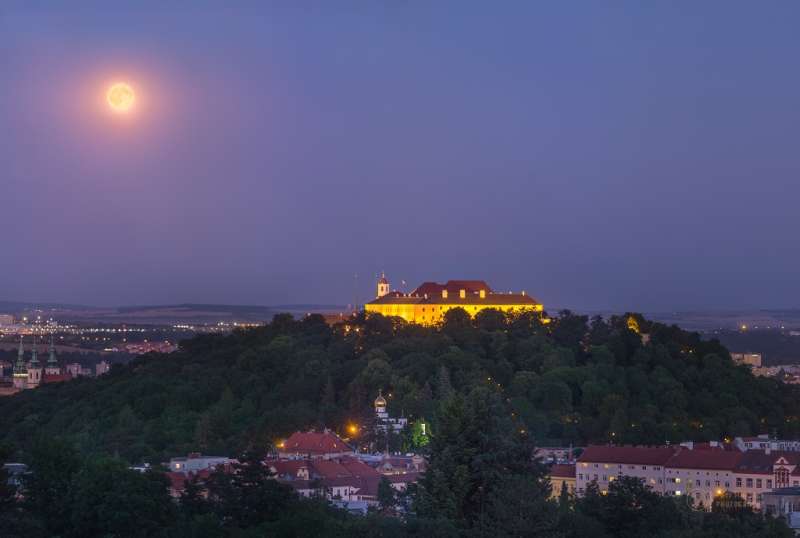
|
Credit & Copyright: Petr Horálek
Explanation:
After sunset
this gorgeous full moon rose over
Brno city in the Czech Republic on July 20, 2016.
The panoramic image was made
during a celebration of the 47th anniversary of the
Apollo 11 lunar landing.
A series of exposures captures the yellow hued lunar disk
against the fading colors of twilight, with
the 14th century Spilberk castle illuminated in the foreground.
Of course, tonight's full moon is called
the
Harvest Moon.
The closest full moon to the northern hemisphere's autumnal equinox,
its traditional name has
long been celebrated in
story
and song.
Tonight's full lunar phase also coincides with a subtle,
penumbral lunar eclipse, the Moon passing only through the
Earth's diffuse, outer shadow.
|
January February March April May June July August September October November December |
| ||||||||||||||||||||||||||||||||||||||||||||||||
NASA Web Site Statements, Warnings, and Disclaimers
NASA Official: Jay Norris. Specific rights apply.
A service of: LHEA at NASA / GSFC
& Michigan Tech. U.
Based on Astronomy Picture
Of the Day
Publications with keywords: Moon
Publications with words: Moon
See also:
- APOD: 2025 August 23 Á Fishing for the Moon
- APOD: 2025 July 20 Á Lunar Nearside
- APOD: 2025 June 28 Á Lunar Farside
- APOD: 2025 June 20 Á Major Lunar Standstill 2024 2025
- APOD: 2025 June 18 Á Space Station Silhouette on the Moon
- APOD: 2025 April 22 Á Terminator Moon: A Moonscape of Shadows
- Moon Near the Edge
